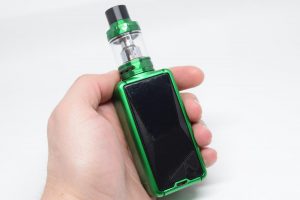E-Cigarettes Less Toxic to Lung Cells Than Tobacco Cigarettes According to New Study
A group of German researchers recently published a study on the toxic effects of e-cigarette vapor and cigarette smoke on human lung cells, and found the vapor is several times less hazardous.
 While some toxicological studies on the effects of inhaling propylene glycol and glycerol do exist, they either involved animal test subjects or exposed human embryonal stem cells, human pulmonary fibroblasts and murine neuronal stem cells to the mentioned substances. Since the primary target organ of e-cigarette vapor is the respiratory tract, a team of German scientists thought it necessary to expose primary human bronchial cells to e-cigarette vapor and analyze its effects. Cells exposed to clean air were used as positive controls, and cells exposed to cigarette smoke were used as negative controls.
While some toxicological studies on the effects of inhaling propylene glycol and glycerol do exist, they either involved animal test subjects or exposed human embryonal stem cells, human pulmonary fibroblasts and murine neuronal stem cells to the mentioned substances. Since the primary target organ of e-cigarette vapor is the respiratory tract, a team of German scientists thought it necessary to expose primary human bronchial cells to e-cigarette vapor and analyze its effects. Cells exposed to clean air were used as positive controls, and cells exposed to cigarette smoke were used as negative controls.
Normal human bronchial epithelial cells were isolated from ring-shaped bronchus samples of two different donors – a male patient (age 69) with a lung adenocarcinoma in the right upper lobe and from of a 75-year old cancer patient. The samples were exposed to vaporized propylene glycol-based Johnsons Creek e-liquid with nicotine concentrations of 0.0% and 2.4%.
For the actual cell exposure, researchers used a Reevo Mini-S electronic cigarette equipped with a 3.3V/900 mAh battery and a 2.2 ohm resistance atomizer. The e-cigarette was connected to the piston pump of a smoking robot, and the cells were exposed to 200 consecutive puffs, with interpuff intervals of 10 seconds. For the cigarette smoke experiment, 10 K3R4F research cigarettes were smoked by the smoking robot, each cigarette puffed six times. Lung cells were analyzed 24 hours after the experiment to allow them to respond to the exposure.
“Compared to clean air exposed cells, cells exposed to e-cigarette vapor showed significantly lower cell viability as well as higher oxidative stress levels,” researchers reported. “Interestingly, the presence of nicotine had no effect on the cell viability and only the cells of one donor showed higher oxidative stress levels after the exposure to vapor of an e-cigarette liquid containing 2.4% nicotine compared to nicotine-free liquid.”
“However, compared to mainstream smoke exposed cells, the values were significantly higher (cell viability) respectively lower (oxidative stress). After adjusting the results to the number of puffs taken during the exposure, the differences were even more pronounced; the cell viability was 4.5–8 times higher and the oxidative stress levels 4.5–5 times lower, depending on the cell donor.” Adjustments needed to be made because the cell samples were exposed to 200 e-cigarette puffs, but only 60 tobacco cigarette puffs.
Although this study found that electronic cigarettes do affect lung cell viability, it also confirmed that e-cigs are less cytotoxic than analogs. This was first reported by Dr. Konstantinos Farsalinos in a 2013 study.
Source: International Journal of Environmental Research and Public Health















